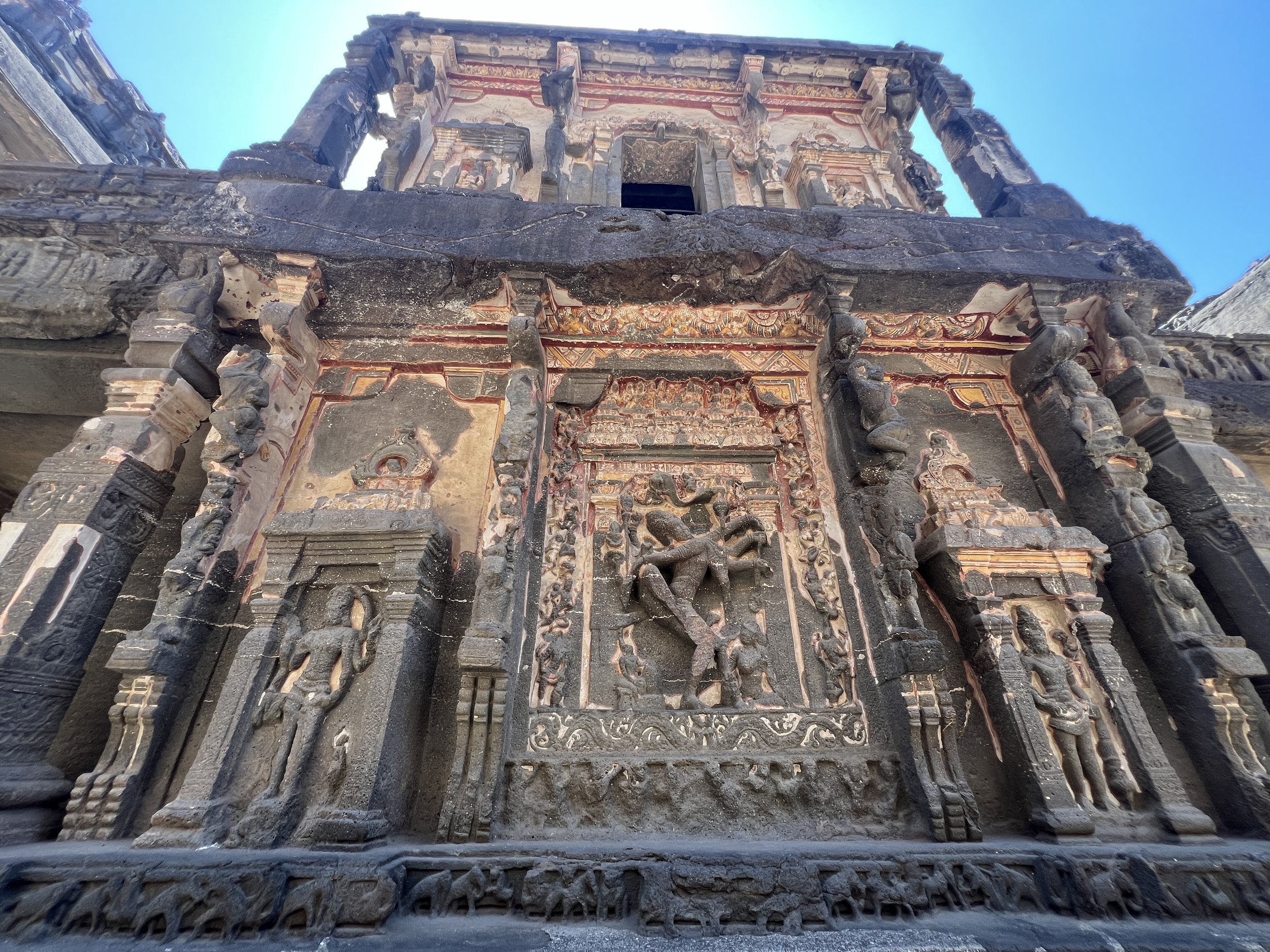Introduction
Nestled against the towering basalt cliffs near Jalgaon in Maharashtra, the Ellora Cave Complex stands as a marvel of ancient ingenuity and artistic brilliance. Dating back to between the 6th and 10th centuries CE, this UNESCO World Heritage Site represents a harmonious confluence of Buddhist, Hindu, and Jain traditions. Its 34 rock-cut caves, carved into a 2-kilometer stretch of rugged cliff face, are a testament to the religious tolerance and cultural diversity of ancient India.

Historical Context
Ellora’s origins span centuries of architectural innovation, reflecting the influence of multiple dynasties. The caves were constructed between the 6th and 10th centuries CE, under the patronage of various rulers, most notably the Rashtrakuta dynasty. These caves served as monasteries, temples, and places of worship, showcasing the fusion of art, religion, and engineering.

Architectural Layout
The Ellora Cave Complex is divided into three distinct groups:
1. The Buddhist Caves (1–12)
The earliest of the Ellora caves, dating to the 6th and 7th centuries, are dedicated to Buddhism. These include monasteries (viharas) and prayer halls (chaityas), adorned with intricate sculptures and stupas. Among these, Cave 10, also known as the “Vishvakarma Cave” or “Carpenter’s Cave,” stands out for its ribbed ceiling, which mimics wooden beams, and its grand statue of Buddha in a preaching pose. This cave reflects the serene yet commanding presence of Buddhist artistry.

2. The Hindu Caves (13–29)
Created during the 8th and 9th centuries under the Rashtrakutas, the Hindu caves exhibit unmatched craftsmanship and grandeur. The pinnacle of this group is Cave 16, the Kailasa Temple, a monolithic masterpiece dedicated to Lord Shiva. Carved from a single block of basalt, the temple is a marvel of engineering and artistry, featuring intricately detailed sculptures of deities, mythological narratives, and towering pillars. It is estimated that over 200,000 tons of rock were removed to create this awe-inspiring structure.

3. The Jain Caves (30–34)
The Jain caves, dating to the 9th and 10th centuries, reflect the spiritual essence of Jainism through their austere yet ornate designs. These caves are adorned with delicate carvings of Tirthankaras, celestial beings, and intricately detailed pillars. Their simplicity and elegance stand in contrast to the grandeur of the Hindu caves, embodying Jain values of restraint and devotion.

Cultural Significance
Ellora is more than an architectural wonder; it is a profound symbol of religious harmony. The coexistence of Buddhist, Hindu, and Jain monuments within a single complex speaks to the inclusive ethos of ancient Indian civilization. The site’s diverse artistic styles also demonstrate the intermingling of cultures and ideas over centuries.
Engineering and Artistic Excellence
The creation of the Ellora caves involved extraordinary technical and artistic feats. The artisans utilized techniques such as vertical excavation, beginning at the top of the basalt cliff and carving downward. This method ensured structural stability and allowed for intricate detailing. The Kailasa Temple, in particular, showcases the advanced understanding of geometry and stonework that characterized the era.

Modern Relevance and Legacy
Today, the Ellora Caves continue to captivate visitors from around the globe, offering a window into India’s rich cultural and spiritual heritage. They stand as enduring monuments to human creativity, perseverance, and devotion. The site’s ability to inspire awe, even centuries after its creation, underscores its timeless appeal.

Conclusion
The Ellora Cave Complex is a monumental masterpiece that embodies the artistic, spiritual, and cultural achievements of ancient India. Its intricate carvings, architectural innovations, and harmonious representation of multiple religions make it one of the world’s most remarkable heritage sites. As a beacon of religious coexistence and artistic excellence, Ellora remains a treasure that continues to inspire and educate generations.

